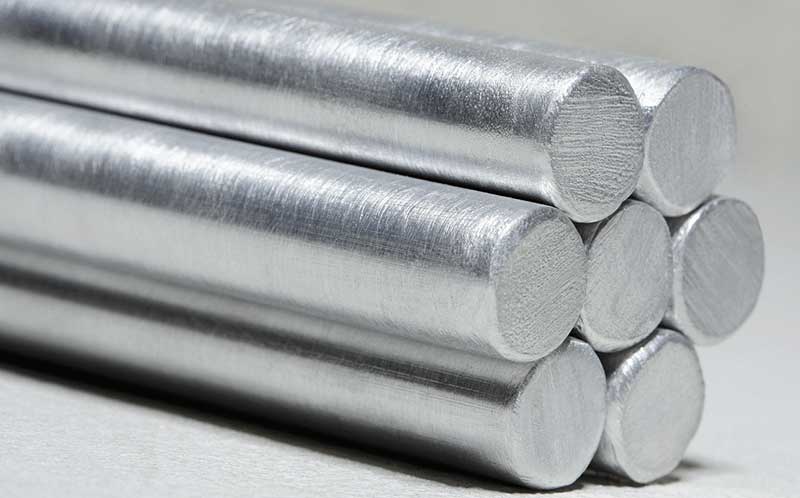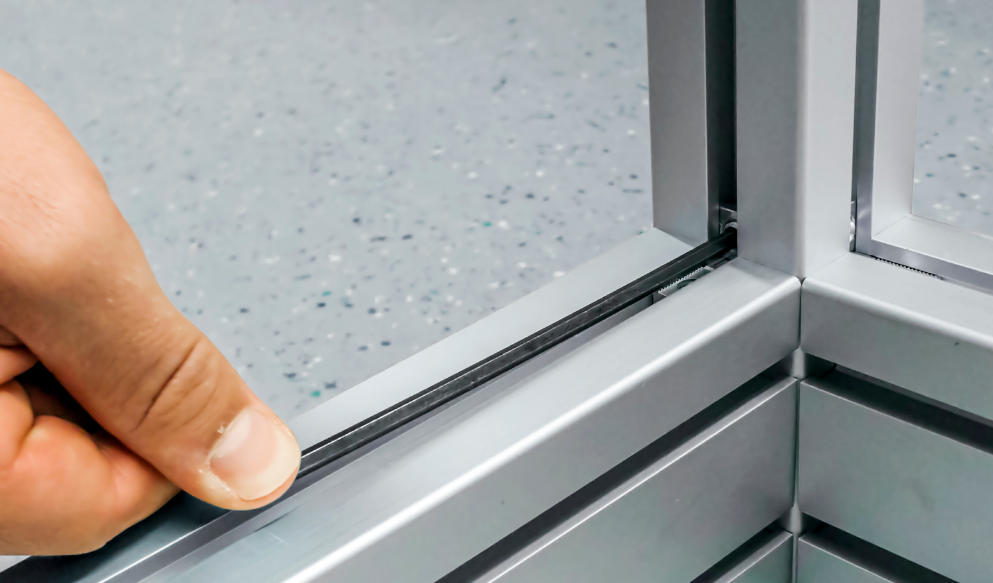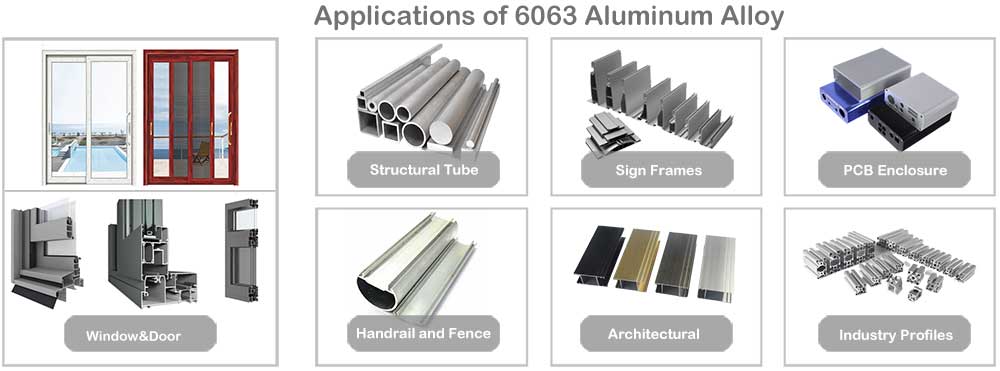6063 Aluminum Alloy – Insights on Properties and Uses
The importance of selecting the right alloy for the right application is paramount.
Selecting the wrong alloy can lead you to face shorter life, poor efficiency and performance, low strength and much more. In short, you can face frequent maintenance and repair expenses. To avoid experiencing such a scenario, you need to get highlights on every single property and practical application of each alloy. This will help you stay on the safe side and boost your ROI. The main purpose of this article is to offer information on every aspect of the 6063 aluminium alloy. These aspects include properties, applications, features, and comparisons with other alloys. Sounds curious? Let’s Uncover the facts!
6063 Aluminum Alloy – Overview
6063 alloy also refers to an architectural aluminium or medium-strength alloy with magnesium and silicon as principal alloying elements. Alloy 6063 also refers to t6 temper alloy that you can anodise and subject to architectural applications.
Besides, this alloy is commonly used for architectural elongations and to weld complex shapes. 6063 alloy is commonly referred to as 6000 series alloy. The melting temperature of this alloy lies in the range of 616 up to 654 degrees Celsius.
Getting Familiar With Material Properties of 6063 Aluminum Alloy
Characteristics of 6063 / Mechanical Properties
| Sr. No. | Mechanical Properties | Value (psi / mpa) |
| 1 | Yield Strength | 21000 – 39000 / 145 – 269 |
| 2 | Modulus of elasticity | 10000 ksi / 68.9 Gpa |
| 3 | Tensile Strength | 27000 – 42000 / 186 – 290 |
| 4 | Fatigue Strength | 150 mpa |
| 5 | Shear Modulus | 27 Mpa |
| 6 | Ultimate Tensile Strength | 470 Mpa |
| 7 | High Strength-to-Weight Ratio | 270 Mpa |
| 8 | High Thermal Conductivity | 209 W/ m-k |
Physical Properties of 6063 Alloy
Considering the physical properties of the 6063 alloy, they reveal that the alloy features high corrosion resistance, good machinability, good surface finish, etc.
| Sr. No. | Physical Property | Value |
| 1 | Corrosion Resistance | High |
| 2 | Surface Finish | Good |
| 3 | Machineability | Good |
| 4 | Weldability | Good |
| 5 | Workability | Normal |
Corrosion Resistance
The strength of the metal or alloy to resist the corrosive impact of weather or a humid environment refers to corrosion resistance. 6063 alloy resists the corrosive impact excellently.
Machinability
6063 aluminium alloy properties allow it to cater to superior machinability. The aluminium association allow you to subject it to various shaping techniques.
Weldability
The thermal properties of the 6063 alloy make it highly weldable and heat-treatable. It results in smooth surfaces through welding and can be easily anodised.
Heat Treatability
6063 T4 Vs. T6 Vs. T52 Vs. T832 Vs. T42
T4 variation features a lower level of yield and tensile strength, which makes it formable and ductile. The other variations, including the T6, T52, and T832, are harder and feature good corrosion resistance and formability. T6 is used for architectural applications, while other variations are popular for aluminium extrusion purposes. Heat treatment to all the variations induces excellent properties.
| Sr. No. | Characteristic Parameters | 6063 – T4 | 6063-T6 | 6063 – T832 | 6063 – T52 |
| 1 | Tensile strength (MPa) | 180 | 210 | 240 | 150 |
| 2 | Yield strength (MPa) | 115 | 135 | 160 | 95 |
| 3 | Elongation (%) | 28 | 25 | 20 | 30 |
| 4 | Hardness | 50 | 60 | 80 | 50 |
| 5 | Formability | Normal | Good | Low | Good |
| 6 | Machinability | High | High | High | High |
| 7 | Weldability | High | High | High | High |
| 8 | Corrosion resistance | High | High | High | High |
| 9 | Applications | Extrusions, Sheet metal, | Architectural extrusions, Structural | High-strength extrusions, Structural | Extrusions, Sheet metal, |
Workability
6063 series of alloys are a good choice for extrusion. You can use this architectural alloy to manufacture custom shapes and sizes of products.
Strength
The medium to high strength of the 6063 alloy makes it suitable for a variety of applications. You can temper its variations, including t832 or t5, to strengthen their properties.
Uncovering the Chemical Composition of 6063 Aluminum
6063 is a medium-strength alloy commonly referred to as an architectural or temper 6063. This is mainly because of the following major alloying elements:
| Sr. No. | 6063 Aluminum Metal Elements (%) | |
| 1 | Al | 98.9 |
| 2 | Mg | 0.45 to 0.9 |
| 3 | Si | 0.2 to 0.6 |
| 4 | Fe | 0.35 |
| 5 | Cu | 0.1 |
| 6 | Cr | 0.1 |
| 7 | Zn | 0.1 |
| 8 | Ti | 0.1 |
| 9 | Mn | 0.1 |
| 10 | Others | 0.05 |
Major Applications of 6063 Aluminum Alloy
The popular alloys used for 6063 aluminium are:
- Structural Applications
- Sign Frames
- PCB Enclosure
- Industry Profiles
- Architectural Aluminum
- Door Frames and Window Frames
- Handrail and Fence
Comparing 6063 Aluminum With Others
6063 Vs. 6061
When it comes to strength, the 6063 is lower than the 6061, but the 6063 is more ductile and formable. See the table below for an in-detail comparison
| Sr. No. | Property | 6061 (T4, T6) | 6063 (T4, T6) |
| 1 | Tensile strength (psi) | 29,000 up to 33,000 | 21,000 up to 25,000 |
| 2 | Yield strength (psi) | 25,000 up to 28,000 | 16,000 up to 22,000 |
| 3 | Elongation (%) | 18 up to 25 | 25 up to 35 |
| 4 | Hardness | 65 up to 85 | 50 up to 70 |
| 5 | Machinability | Medium | High |
| 6 | Weldability | Medium | High |
| 7 | Applications | Aircraft, Automotive, Marine | Extrusion, Architectural, Sheet Metal |
6063 Vs. 5052
5052 variation features more excellent strength than 6063 and supports convenient formability and machinability. The characteristic’s parameters are:
| Sr. No. | Property | 5052 (H32, H34, H38) | 6063 (T4, T6) |
| 1 | Tensile strength (psi) | 25,000 up to 32,000 | 21,000 up to 25,000 |
| 2 | Yield strength (psi) | 16,000 up to 25,000 | 16,000 up to 22,000 |
| 3 | Elongation (%) | 30 up to 40 | 25 up to 35 |
| 4 | Hardness | 50 up to 65 | 50 up to 70 |
| 5 | Machinability | High | High |
| 6 | Weldability | High | High |
| 7 | Applications | Electrical, Architectural, Food | Extrusion, Architectural, Sheet Metal |
6063 Vs. 7075
7075 is not tensile because it features higher hardness and toughness. This is why you can use it in sports applications and aircraft manufacturing.
| Sr. No. | Property | 7075 (T4, T6, T73) | 6063 (T4, T6) |
| 1 | Tensile strength (psi) | 88,000 up to 95,000 | 21,000 up to 25,000 |
| 2 | Yield strength (psi) | 75,000 up to 85,000 | 16,000 up to 22,000 |
| 3 | Elongation (%) | 10 up to 14 | 25 up to 35 |
| 4 | Hardness | 130 up to 150 | 50 up to 70 |
| 5 | Machinability | High | High |
| 6 | Weldability | High | High |
| 7 | Applications | Aerospace, sports components | Extrusion, Architectural, Sheet Metal |
6063 Vs. 2024
The 2024 aluminium alloy is also stronger and tougher than the 6063. Further comparison details are in the table below:
| Sr. No. | Property | 2024 (T4, T6, T73) | 6063 (T4, T6) |
| 1 | Tensile strength (psi) | 470 MPa | 21,000 up to 25,000 |
| 2 | Yield strength (psi) | 420 MPa | 16,000 up to 22,000 |
| 3 | Elongation (%) | 22 | 25 up to 35 |
| 4 | Hardness | HB 120 | 50 up to 70 |
| 5 | Machinability | Better | High |
| 6 | Weldability | Poor | High |
| 7 | Applications | Aerospace, sports components | Extrusion, Architectural, Sheet Metal |
Conclusion
To make an informed decision, it is highly critical to pay attention to the properties and uses of the specific alloy. The properties of the alloys are what make them suitable for different applications. Higher weldability, heat treatability, and higher strength-to-weight ratio make 6063 alloy suitable for railings, door frames, conduit housings, etc. Want to make an informed decision on the choice of other metals? Dont forget to visit here!







